Tree Care Tips from Bluestone Tree
Top tree care tips and additional tree care information from ISA Certified Arborist Matt Baldwin.
1. Choose the Right Tree for the Right Site Conditions
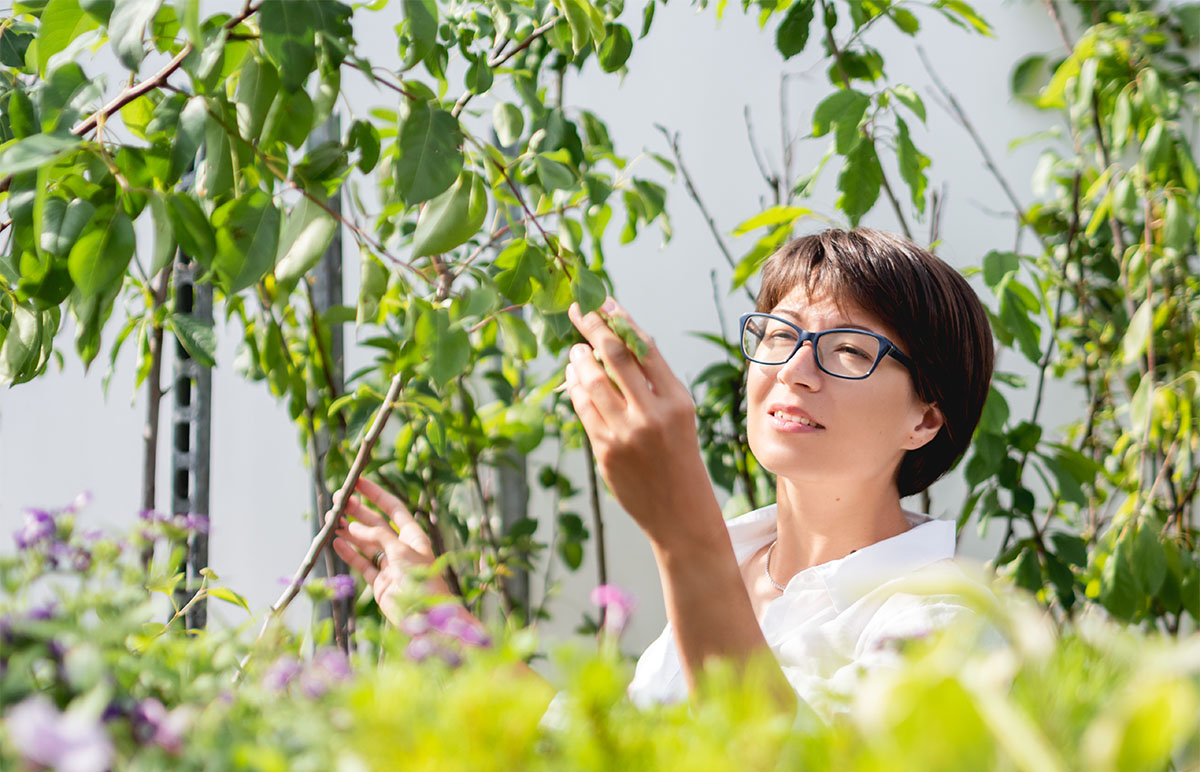
Trees are a major investment for our properties and future generations. Tree selection and placement are important decisions a homeowner makes to ensure that these investments grow and mature in a healthy manner. Questions to consider when selecting a tree to plant; Why is it being planted and what function will it serve? What size tree is best suited for the location? How large will the tree be when full grown?
Selecting the right form (shape) to complement the desired function can reduce maintenance costs and increase the tree’s value. Larger trees typically provide the greatest economic and environmental returns. Low spreading trees may be planted under overhead utility lines, while a tall evergreen may provide a screen. Trees function in many ways. Deciduous shade trees cool homes in the summer and allow the winter sun to heat homes when they lose their leaves. Evergreens can provide a windbreak or a screen for privacy. Fruit trees or shrubs can provide food for owners or wildlife. Street trees reduce the glare from pavement, reduce runoff, filter pollutants, add oxygen, and improve overall appearance and quality of life.
Trees also provide environmental benefits such as reducing the amount of carbon dioxide in the atmosphere. Choosing the right tree for the right site conditions is the key to tree survival and reduced maintenance. Please consider soil conditions, sun and wind exposure, space constraints, hardiness zone, human activity, drainage, insect and disease susceptibility when choosing the site for your next tree planting.
2. Plant Trees Properly in Late Autumn or Early Spring
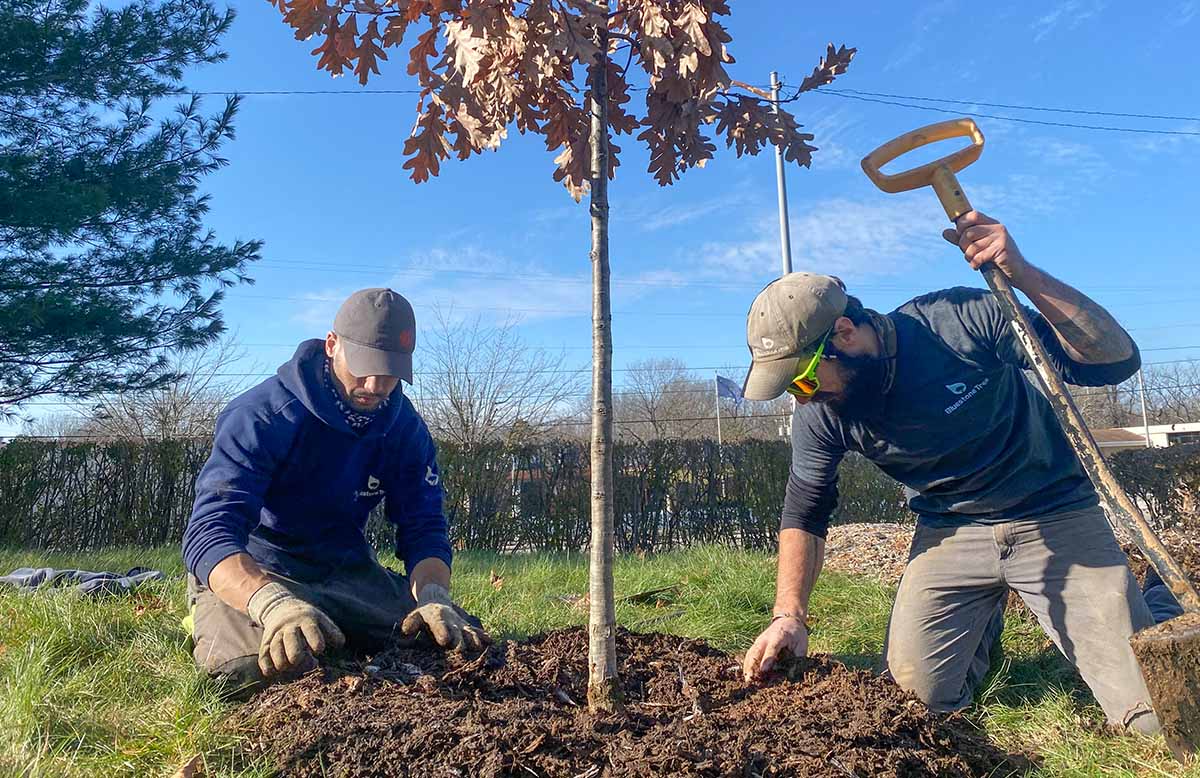
Tree planting starts with a pre-installation planning process. (Please see tip #1, as it is part of the pre-installation process). Once you have confirmed that there are no utility conflicts (below ground and overhead) and have picked the right tree for the right site, it is time to properly plant the tree you have selected. Ideally, trees are planted in the late fall (after leaf drop) or in early spring, before bud break.
First, you will need to locate the trunk flare at the base of the tree. If it is not visible, remove any excess soil to expose it. Now it is finally time to start digging. Dig a shallow, yet broad planting hole. It is important to create a hole that is 2-3 times wider than the root ball. It should only be as deep as the root ball. Remove any covering from around the root ball, including burlap, nylon string and wire basket. Removal of the entire basket is ideal, but at the very least the first 2-3 rings should be removed. Then gently backfill the tree, being careful not to cover up the root flare with soil.
3. Apply 2-4 Inches of Mulch, Ideally Out to the Drip Line
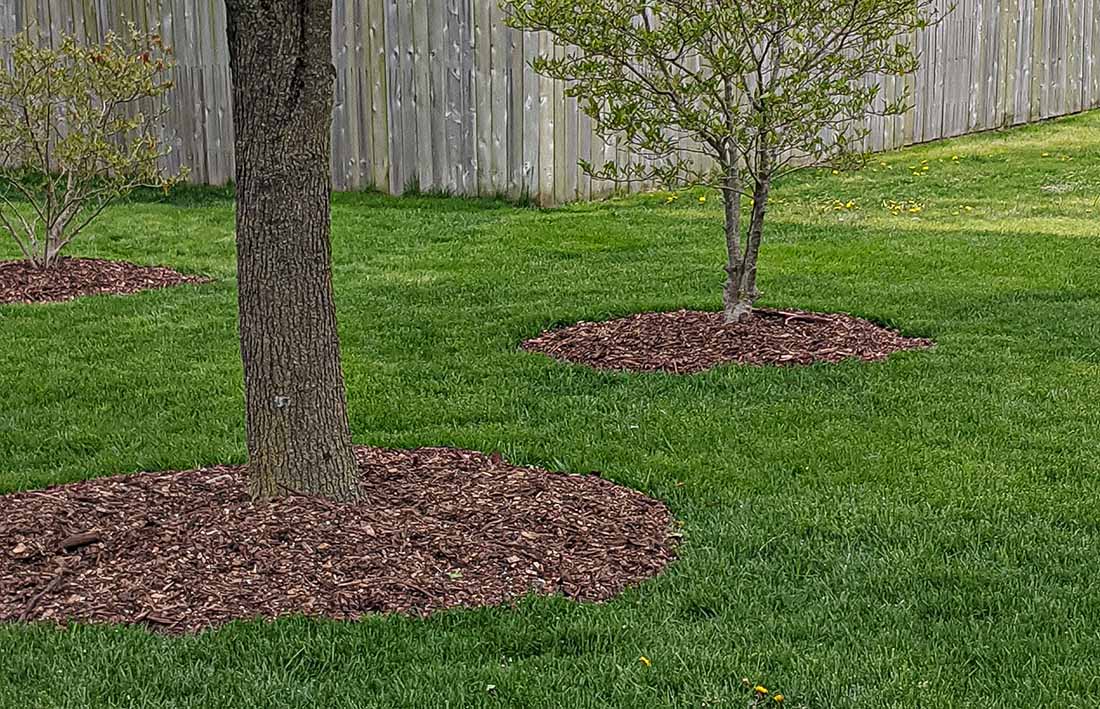
Proper mulching of trees, regardless of size and maturity, is one of the most beneficial techniques in maintaining a healthy tree. One of the biggest issues that we see out assessing trees is drought stress. Properly mulching trees reduces soil moisture loss through evaporation. It protects the tree from extreme winter and summer temperatures and reduces the likelihood of damage from string trimmers or mowers. Mulch improves soil biology, aeration, structure and drainage over time and increases soil fertility as it decomposes.
The recommended mulching depth is 2-4 inches. An initial application of 4 inches is acceptable, but it should be maintained at 2-3 inches. Mulching out to the drip line of the tree is optimal, but any mulch is better than none. Be sure to keep it back from the base of the tree because applying mulch around the trunk (touching the bark) can soften the tissues and lead to decay. It can also promote stem girdling roots.
4. Use a Moisture Meter to Check Soil Around Trees, Water When Necessary
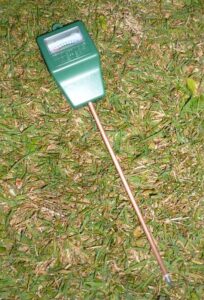 Trees signal their water deficit through a number of symptoms. The most common changes in appearance are lighter green to yellow-green foliage, leaf scorch around the margins, wilting leaves and dropping them prematurely. These stressed trees will also often have stunted shoots and may produce more seeds than typically seen for a tree. Trees that are stressed by drought are also more susceptible to insects and fungal diseases. Another sign is consistent dieback or thinning along the upper canopy.
Trees signal their water deficit through a number of symptoms. The most common changes in appearance are lighter green to yellow-green foliage, leaf scorch around the margins, wilting leaves and dropping them prematurely. These stressed trees will also often have stunted shoots and may produce more seeds than typically seen for a tree. Trees that are stressed by drought are also more susceptible to insects and fungal diseases. Another sign is consistent dieback or thinning along the upper canopy.
Watering trees when there is not adequate soil moisture is key to reducing stress levels. The general rule of thumb is that trees need about 1” of water per week. Nature normally provides what’s needed, but not always. Using a soil moisture meter is one great technique to measure the amount of water a tree needs. We recommend using soaker hoses around the whole root zone or out to the drip line of the tree. Be sure not to over water because it can lead to root decay, fungal issues and long term health issues.
5. Hire an ISA Certified Arborist for More Tree Care Tips and Advice
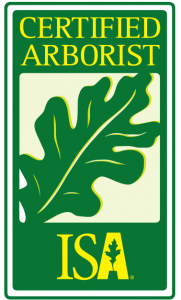 Arboriculture is the cultivation, management and study of individual trees, shrubs and other woody perennial plants. ISA Certified Arborists have achieved a level of knowledge in the art and science of tree care through experience and by passing a comprehensive examination developed by some of the nation’s leading experts on tree care. ISA Certified Arborists must also continue their education to maintain their certification and follow the clearly defined industry standards. An arborist, by definition, is an individual trained in the art and science of planting, caring for, and maintaining individual trees.
Arboriculture is the cultivation, management and study of individual trees, shrubs and other woody perennial plants. ISA Certified Arborists have achieved a level of knowledge in the art and science of tree care through experience and by passing a comprehensive examination developed by some of the nation’s leading experts on tree care. ISA Certified Arborists must also continue their education to maintain their certification and follow the clearly defined industry standards. An arborist, by definition, is an individual trained in the art and science of planting, caring for, and maintaining individual trees.
Proper tree care is an investment that can lead to substantial returns. Poorly maintained trees can be a significant liability. An ISA Certified Arborist with a Tree Risk Assessment Qualification can perform a tree risk assessment to help reduce the risk with the trees on your property and formulate a tree risk mitigation plan. Pruning or removing trees, especially large trees, can be dangerous work. Such work should be done only by those trained and equipped to work safely in trees.
